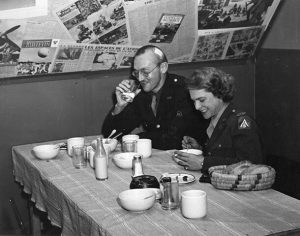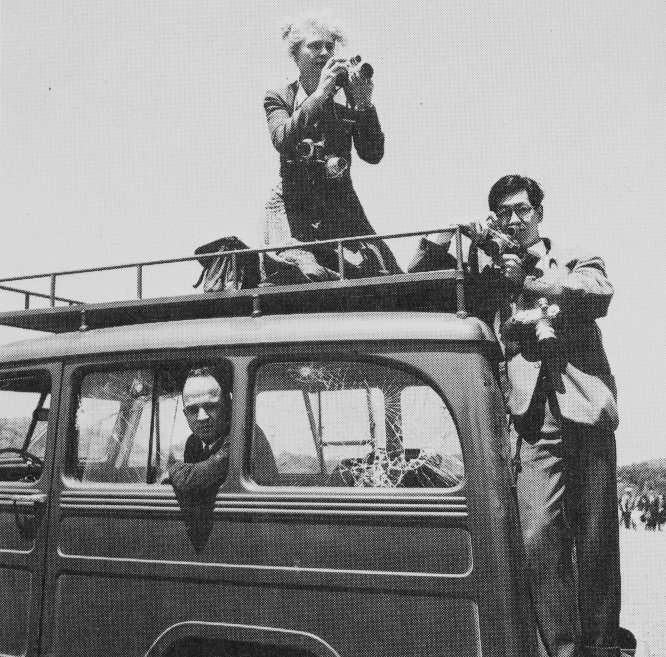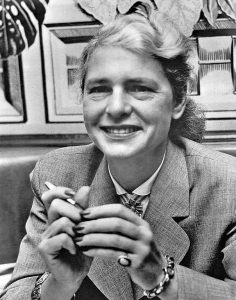By Emily Clark
What began as a stint with a used Ica Reflex camera, a cracked lens, and glass plates led to Margaret Bourke-White’s illustrious career as a war correspondent and photojournalist. Though she traveled the world capturing some of the 20th century’s most significant people and events, this woman of many firsts spent her later years at her peaceful home in Darien, Connecticut.
An Early Start in Photography
Born in New York City in 1904, Bourke-White grew up in rural New Jersey with a fascination for insects and reptiles. She pictured herself as a scientist in the jungle, finding oddities for museums and immersing herself in the natural world. Though she entered Columbia University to study zoology, her interests broadened after she enrolled in a course on photography, a field which left a lasting impression on her. She soon left New York City to pursue her studies at various other schools and eventually graduated with a degree in biology from Cornell University in 1927.
Making a Name for Herself
As Bourke-White’s interest in photography continued, she moved to Cleveland to open her own studio and begin a freelance career in industrial photography, focusing on architectural subjects. “The camera is a remarkable instrument,” she said. “Saturate yourself with your subject and the camera will all but take you by the hand.” Her work caught the attention of Henry Luce, the publisher of Fortune, who offered her a job in 1929 as the magazine’s first staff photographer, a position that became her stepping stone to fame. Luce sent Bourke-White to the Soviet Union in the early 1930s as the first foreign journalist to capture images inside the young country—including those of factory laborers and Russian citizens in everyday life. The thousands of black and white photographs she took eventually made up a book entitled, Eyes on Russia.
Back in the United States, Bourke-White continued working for Luce. With the backing of Fortune magazine, she ventured into the South and Midwest where she and writer Erskine Caldwell photographed the devastation of the Dust Bowl and the Great Depression through the lives of sharecroppers and tenant farmers. This resulted in their book, You Have Seen Their Faces, and led Bourke-White to focus more on human interest photographs. In 1936, Luce’s new magazine, Life, hired her as its first female photographer; Bourke-White’s picture of a Montana dam graced its inaugural cover.
Finding success both professionally and personally, Bourke-White married Caldwell in 1939 (her second marriage) and purchased a home in Darien, Connecticut. Though the marriage only lasted three years, she called this community home for the next three decades.
Photographing the Horrors of World War II

Life magazine photographer Margaret Bourke-White and Richard Tregaskis at a North Africa airport – Archives Branch, USMC History Division
When World War II broke out, Bourke-White traveled throughout Europe, photographing the turmoil overseas for Life magazine and accompanying the US military as their first female photographer. In the early 1940s, she captured images of the fighting in North Africa and Italy, the German advance on Moscow, and the bombing missions of the Air Corps. Her courage and zeal took her into dangerous situations but often allowed her to get the best photographs for Life and surpass competitors. Because of her innate ability and exploding success, Bourke-White had the honor of wearing the first uniform designed for a female war correspondent.
Some of her most memorable photographs resulted from her attachment to General George Patton’s army at the end of the war. At Buchenwald—the notorious concentration camp in Germany—Bourke-White captured images of emaciated prisoners and piles of dead bodies. Many were published in Life and in The Living Dead of Buchenwald, her stirring photo essay of concentration camp horror. Noted as some of the most memorable of the 20th century, the images shocked the world. Of such conditions, Bourke-White said, “I have to work with a veil over my mind. I hardly knew what I had taken until I saw prints of my own photographs.”
Gandhi, Roosevelt, and the Pope
Throughout the 1950s, Bourke-White continued traveling the world and photographing the most well-known people and events of the mid-century. Sending photos back to New York for publication in Life, she documented the violence between India and Pakistan, the conditions under apartheid in South Africa, and the war in Korea.
Bourke-White became one of the country’s most respected photojournalists, especially through the eras of the Depression and World War II. Among those who sat for her camera were President Franklin Roosevelt, Prime Minister Winston Churchill, Pope Pius XI, and Soviet Premier Joseph Stalin. While in India, she immortalized Mahatma Gandhi at his spinning wheel. With a strong belief in social activism and public opinion, Bourke-White showed (through her photographs) not only the pivotal moments of her time but also highlighted the injustices in the world.
Retirement in Darien
When covering the Korean War, Bourke-White developed pain in her arms and legs and upon her return to New York, learned she had contracted Parkinson’s disease. At only 49 years old, this renowned artist kept her illness a secret until her retirement from Life and professional photography about 15 years later. Her memoir, Portrait of Myself (1963), became a best-seller.
Back at her beloved Darien home, she surrounded herself with the memories of her travels and found peace within the natural setting that forever fascinated her. Margaret Bourke-White died from Parkinson’s at Stamford Hospital on August 27, 1971. Longtime friend and fellow photographer Alfred Eisenstadt said Bourke-White was “great because there was no assignment, no picture, that was unimportant to her…She immersed herself in the smallest detail, and everything she did was a challenge to her.”
Emily Clark is a freelance writer and an English and Journalism teacher at Amity Regional High School in Woodbridge.










